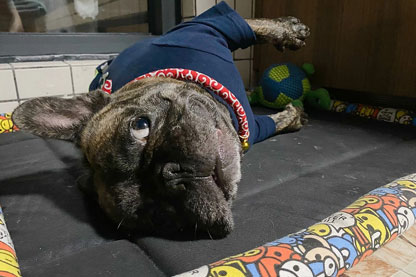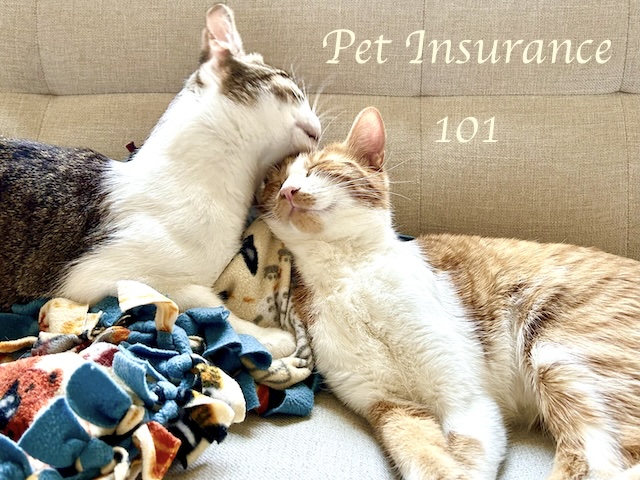
The current boom in the “pet economy” has created growth opportunities for pet insurance , making it a growing area of focus for the insurance industry seeking breakthroughs. According to data released by PricewaterhouseCoopers , the market size of China’s pet industry reached 348.8 billion yuan in 2021, a growth rate of 17%. According to iResearch Consulting , as of 2020, the number of dogs and cats in urban areas in China had exceeded 100 million.
However, it should be pointed out that despite facing such a considerable market, the development of domestic pet insurance is still in its early stages, with problems such as poor claims quality, limited coverage, and a single product range .
In the case of insufficient market development, there is also a serious lack of supervision. Currently, there are no relevant laws and regulations on pet insurance in China, which has led to even greater chaos in the underdeveloped pet insurance market.

In contrast, the National Association of Insurance Commissioners (NAIC) recently passed the Model Pet Insurance Act , which sets regulatory standards for the rapidly growing pet insurance market .
The enactment of the Model Pet Insurance Act coincides with the rapid growth of the U.S. pet insurance industry. In its report on the enactment of the Model Act, the NAIC noted that in 2021, the U.S. pet insurance industry’s total annual premiums were approximately $2.8 billion, a 30.5% increase from $2.175 billion in 2020. According to the North American Pet Health Insurance Association, the number of insured pets exceeded 4.41 million in 2020, a 27.7% increase from the 3.45 million pets in 2019.
In summary, the key elements of the model law include consumer protection, pre-existing conditions, benefit plans, and agent training requirements .
Consumer Protection : The Model Law provides for a number of consumer protections related to policy renewals, waiting period disclosure requirements, policy limitations, disease types, benefit plans, etc.
Pre-existing conditions : The Model Act limits the requirements for insurance companies to deny claims related to a pet’s pre-existing conditions.
Benefit Plans : The Model Act explicitly requires insurers and their agents to clearly distinguish between pet benefit plans and insurance policies, helping to eliminate consumer confusion between insurance policies and non-insurance benefit plans.
Training requirements : The Model Law provides for the training of insurance agents to ensure that they provide appropriate information to consumers.
The full text of the Model Law is set out below.
Model Pet Insurance Act
Scope of application and purpose
1) The Model Act is intended to promote the public welfare by establishing a comprehensive legal framework under which pet insurance may be sold in a state.
2) The requirements set forth in the Model Law shall apply to pet insurance policies issued, sold, solicited, negotiated, or offered to any resident of a state, as well as to policies or certificates of insurance issued and delivered in a state.
3) All other applicable provisions of a state’s existing insurance laws shall continue to apply to pet insurance, but the specific provisions of the Model Law shall supersede any general legal provisions that would otherwise apply to pet insurance.
definition
If a pet insurance company uses any term in this Act in a pet insurance policy, the pet insurance company shall use the definitions of each term set forth below and include those definitions in the policy. The pet insurance company shall also provide the definitions by a clear and conspicuous link on the pet insurance company’s homepage or on the pet insurance company’s plan administrator’s website.
Nothing in this Act shall in any way prohibit or limit the types of exclusions that a pet insurance company may use in its policies or require a pet insurance company to include any limitation or exclusion as defined below.
The definitions used in this Act include:
A. “Chronic condition” is a condition that can be treated or managed but not cured.
B. “Congenital anomaly or disease” means a condition present from birth, whether inherited or caused by the environment, which may cause or contribute to the disease.
C. ” Genetic disorders “ are abnormalities that are passed from parents to offspring and may result in disease.
D. “Orthopedic” means disorders affecting the bones, skeletal muscles , cartilage, tendons, ligaments, and joints, including, but not limited to, elbow dysplasia, hip dysplasia, intervertebral disc degeneration, patellar luxation , and cranial cruciate ligament rupture, and does not include cancer or metabolic, hematopoietic, or autoimmune disorders.
E. “Pet Insurance” means a property insurance policy that provides coverage for accidents and illnesses to pets.
F. “Pre-existing Condition” means any condition that meets any of the following criteria prior to the Pet Policy Effective Date or during any Waiting Period:
(1) A veterinarian has provided medical advice;
(2) the pet has received previous treatment;
(3) The pet’s signs or symptoms are directly related to the disease for which the claim is based on information from a verifiable source.
Conditions covered under the policy cannot be considered as pre-existing conditions in any renewal policy.
G. “Renewal Policy” means a policy issued and delivered at the end of the Policy Term that replaces a previous policy issued and delivered by the same pet insurance company or an affiliated pet insurance company and that provides substantially similar coverage types and limits as those in the replaced policy .
H. “Veterinarian” means an individual who holds a valid license to practice veterinary medicine issued by the appropriate licensing entity in the jurisdiction in which the individual practices .
I. “Veterinary Expenses” means expenses associated with medical advice, diagnosis, care, or treatment provided by a veterinarian, including, but not limited to, the cost of medications prescribed by a veterinarian.
J. “Waiting Period” means the period of time specified in pet insurance that needs to begin before some or all of the coverage under the policy will occur. The waiting period may not apply to the renewal of an existing policy.
K. “Benefit plan” means a subscription-based or reimbursement-based plan, as distinguished from an insurance policy that provides goods and services to promote the general health, safety, or well-being of pets . Any benefit plan that contains triggering language for an insurance contract as defined in state law or regulation, which may include: “promises to indemnify another,” or “pays a specified amount based on an identifiable contingency,” or “provides coverage for a contingency,” is considered insurance business , as determined by the insurance code. This definition is not intended to directly classify a single-party contract between a service provider and a pet owner as “insurance business” unless other coverage is also present.
Disclosures
A. Pet insurance companies that provide pet insurance should disclose the following information to consumers:
(1) If the policy excludes coverage due to any of the following: (a) pre-existing conditions; (b) hereditary conditions; (c) congenital anomalies or diseases; (d) chronic conditions.
(2) If the policy includes any other exclusions, provide the following statement: “Other exclusions may apply. Please refer to the exclusions section of the policy for more information.”
(3) Any policy provision that limits coverage through waiting or dependency periods, deductibles, coinsurance, or annual or lifetime policy limits.
(4) Pet insurance companies reduce coverage or increase premiums based on the insured ’s claims history, the age of the insured pet, or changes in the insured’s geographic location.
(5) If the underwriting company is different from the brand name used to market and sell the product.
B. Right to Verification and Surrender .
(1) Unless the insured has made a claim under the pet insurance policy, the applicant for pet insurance shall have the right to inspect the policy, certificate or rider within fifteen (15) days after receipt of the policy, or to return it to the insurance company or the company’s agent, and to request a refund of the premium if the applicant is not satisfied for any reason after inspecting the policy, certificate or rider.
(2) Pet insurance policies, certificates, and riders must include or include a notice prominently printed on the front page, including specific instructions for completing a policy cancellation. The following free trial statement or substantially similar language must be included:
“You have 15 days from the date you receive this policy, certificate, or rider to review it and return it to the Company if you decide you do not want coverage. You do not have to tell the Company why you are canceling the policy. If you decide not to keep the policy, simply return it to the Insurance Company’s administrative office or to the agent as long as you have not filed a claim. You must cancel the policy within 15 days of receipt. The Company will refund any premiums paid in full within 30 days of receiving the returned policy, certificate, or rider. The premium refund will be sent directly to the payer. The policy, certificate, or rider will become invalid.
C. The pet insurance company shall clearly disclose, prior to the issuance of a policy, through a clear and conspicuous link on the pet insurance company’s homepage or on the pet insurance company’s plan administrator’s website, the basis or formula by which the pet insurance company determines the claim amount under the pet insurance policy.
D. A pet insurance company that uses a schedule of benefits to determine claim payments under a pet policy should do both of the following:
(1) Clearly disclose the applicable schedule of benefits in the policy.
(2) Disclose all tables of benefits used by the pet insurance company through a clear and conspicuous link on the home page of the pet insurance company’s or the pet insurance company’s plan administrator’s website.
E. A pet insurance company shall do both of the following when determining benefits for pet insurance that are based on usual and customary charges or any other limitation on reimbursement based on current veterinary provider charges:
(1) Include a usual and customary expense limitation clause in the policy that clearly states the basis on which the pet insurance company determines usual and customary expenses and how that basis will be used to calculate benefits.
(2) Disclose, through a clear and prominent link on the home page of the pet insurance company or the pet insurance company’s program administration website, the basis on which the pet insurance company determines usual and customary charges.
F. If any physical examination by a licensed veterinarian is required for coverage, the pet insurance company should clearly and conspicuously disclose, prior to purchase, the required content of the physical examination and that documentation of the physical examination may result in the exclusion of pre-existing conditions.
G. Waiting periods and requirements, if applicable, must be clearly and conspicuously disclosed to the consumer before purchasing a policy.
H. A pet insurer shall include a summary of all policy terms required by subsections (A) through (G), inclusive, on the home page of the website of the pet insurer or the pet insurer’s plan administrator titled “Pet Insurer Disclosure of Important Policy Terms,” with a clear and conspicuous link to the document required by subsection (H) titled “Insurer Disclosure of Important Policy Terms.”
I. When issuing a new pet insurance policy, a pet insurance company shall provide the consumer with a copy of the “Insurer’s Disclosure of Important Policy Terms” required pursuant to subsection (H) in at least 12 point font upon delivery of the policy.
J. When issuing or delivering a pet insurance policy to a policyholder, the pet insurance company shall include a written disclosure in 12-point boldface type that contains the following information: (1) The mailing address, toll-free telephone number, and website address of the [State Department of Insurance]. (2) The address and customer service telephone number of the pet insurance company or agent or broker . (3) If the policy was issued or delivered by an agent or broker, a statement advising the policyholder to contact the broker or agent for assistance.
K. The disclosures required by this section shall be in addition to any other disclosure requirements required by law or regulation.

Covered illnesses
A. An insurer may issue a policy based on one or more pre-existing conditions and provide appropriate disclosure to the consumer. The burden is on the pet insurance company to prove that the excluded pre-existing condition applies to the condition for which the claim is being made.
B. An insurer may issue a policy that provides for a waiting period of not more than 30 days for illness or orthopedic conditions not caused by an accident, and after the policy becomes effective, the insurer has the burden of proving that the pre-existing condition does not apply.
(1) A pet insurance company that utilizes the waiting period under this section shall include a provision in its contract that allows the waiting period to be waived upon completion of a physical examination. A pet insurance company may require an examination by a licensed veterinarian after the purchase of a policy.
(a) A medical examination under Section B(1) shall be paid for by the policyholder unless the policy provides that the pet insurer will pay for the medical examination.
(b) A pet insurance company may specify the content to be included in the medical examination and required documentation, so long as such specifications do not unreasonably restrict the consumer’s ability to waive the waiting period provided in Section 5B.
(2) The waiting period, and the requirements applicable to it, must be clearly and conspicuously disclosed to the consumer before purchasing the policy.
C. A pet insurance company may not require the insured to undergo a veterinary examination of the covered pet upon policy renewal.
D. If a pet insurance company includes any prescription, health, or non-insurable benefits in its policy , then that becomes part of the policy contract and must comply with all applicable laws and regulations under insurance law.
E. An insured’s eligibility to purchase a pet insurance policy shall not be based on participation or non-participation in a separate benefit plan.
Benefit Plan Sales
A. Pet insurance companies and/or agents may not:
(1) Marketing the benefit plan as pet insurance;
(2) Promote benefit plans during the sale, solicitation, or negotiation of pet insurance.
B. If the benefit plan is sold by a pet insurance company and/or agent:
(1) Purchase of a benefit plan should not be a requirement for purchasing pet insurance.
(2) The cost of the benefit plan shall be separate and identifiable from any pet insurance policy sold by the pet insurance company and/or agent.
(3) The terms and conditions of the benefit plan should be separate from any pet insurance policy sold by the pet insurance company and/or agent.
(4) Products or coverage offered through a benefit plan may not duplicate products or coverage offered under a pet insurance policy.
(5) Advertisements for welfare schemes must not be misleading and must comply with the provisions of section 6B of this Act.
(6) The pet insurance company and/or agent shall clearly disclose to the consumer the following, printed in 12-point boldface: (a) the benefit plan is not insurance; (b) the pet insurance company’s address and customer service telephone number; and (c) the mailing address, toll-free telephone number, and website address of the [State Department of Insurance].
C. In a pet insurance contract, coverage referred to as a “health” benefit is considered insurance.
Agent training requirements
The Model Law provides for the training of insurance agents to ensure that they provide accurate information to consumers.
Specifically, agent training requirements include the following points.
A) An insurance agent may not sell, solicit, or negotiate pet insurance products until he or she is properly licensed and has completed the required training specified in Subsection C.
B) Insurance companies should ensure that their agents are trained in Subsection C and are appropriately trained on the coverage and diseases covered by their pet insurance products.
C) The training required by this section shall include information on the following topics: (1) pre-existing conditions and waiting periods; (2) the distinction between pet insurance and non-insurance benefit plans; (3) hereditary diseases, congenital anomalies, and chronic conditions, and whether pet insurance policies cover these conditions; and (4) rating, underwriting, renewal, and other related administrative matters .
D) Meeting the training requirements of another state that are substantially similar to those specified in subsection C will be considered meeting the training requirements of this state.
The above is the detailed content of the “Pet Insurance Model Law” passed by the American Association of Insurance Commissioners. It can be seen that the “Model Law” has made detailed provisions on definitions, disclosure matters, covered diseases, benefit plans, agent training requirements, etc. In essence, it is to avoid problems that are prone to occur in a series of links of pet insurance from underwriting to claims through clear written documents .
For example, in terms of information disclosure , the Model Law makes as detailed requirements as possible for insurance companies, including premium factors, coverage and limitations, claims basis, policy cancellation, waiting period, etc. The core purpose is to ensure that this information can be conveyed to consumers, protect consumer rights and interests, and reduce claims disputes.
The focus of the welfare plan is to distinguish it from the coverage of pet insurance. On the one hand, it clarifies the specific coverage of the pet insurance policy and reiterates the coverage scope; on the other hand, it provides guidance for insurance companies to design value-added services such as welfare , avoiding claims disputes caused by confusing coverage and welfare content.
In terms of agent training, it basically covers the most important aspects of pet insurance, including waiting periods, disease types, the difference between insurance and benefits, and underwriting-related matters. In fact, it is a summary of the previous provisions in the Model Law, that is, to ensure that agents can convey the content accurately and without error, and avoid misleading sales due to agent ability issues.
In short, the core of this bill is to make insurance companies explain clearly and consumers understand, so as to avoid friction due to information asymmetry .

In fact, the problems identified in the “Pet Insurance Model Law” also exist in the current domestic pet insurance market. In summary, the problems existing in domestic pet insurance are reflected on both the supply side and the service side .
From the supply side, the current pet healthcare system is unregulated and lacks medical data, making it difficult for insurance companies to accurately predict claims . This is reflected in product design through reduced insurance limits, increased deductibles, restricted claim items, and mandatory hospital requirements, impacting both coverage and user experience.
From the consumer’s perspective, difficulties in claims processing and inadequate value-added services are the biggest issues . Difficulty in claims processing is a major challenge facing pet insurance products. Searching for “pet insurance claims” on platforms like Xiaohongshu (Little Red Book) reveals claims denials and numerous negative cases. Pet insurance claims suffer from complex processes, difficult conditions, and long processing times.
Inadequate value-added services also significantly impact the pet insurance experience . For example, Dadi Insurance ‘s upgraded pet medical insurance plan drew criticism due to difficulties in providing value-added services for the complimentary triple cat vaccine. Some consumers reported experiencing a series of delays in redeeming vaccines, including out-of-stock vaccines and the need to pay the price difference.
Problems in the pet insurance market include consumers’ lack of understanding of the terms and conditions, but more broadly, insurance companies themselves fail to clearly consider aspects of policy design and benefits. Therefore, with the rapid growth of the pet economy creating opportunities for pet insurance, we hope that domestic laws and regulations governing pet insurance will be introduced soon to regulate the market, constrain insurance companies and agents, and effectively protect consumers .



